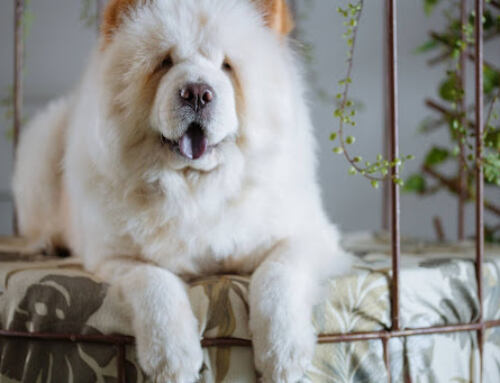The blue merle Australian shepherd dog is one of those breeds with distinctive coat shades and color combinations. Australian shepherds come in the following colors: merle, red, red merle, red tricolor, black, black tricolor, and blue merle. Of all the colors, the blue merle Australian shepherd is the most recognizable. The color of their coat first catches your eye.
But isn’t life more than just what we can see? It is impossible to deny these dogs’ intelligence or attractiveness. In fact, they are among the breeds with the highest intelligence levels. People frequently mix up Australian shepherds and Border Collies due to their similar appearance and intelligence.
If you’re thinking of bringing a new furry family member home, research is essential. This will allow you to confirm that the breed or type of dog you choose is a good fit for your requirements, way of life, place of living, and family. If you’re considering adopting or rehoming a blue merle Australian Shepherd, what should you expect and what do you need to know? So start reading…
What Is a Blue Merle Australian Shepherd?
The blue merle is one of the four recognized subvarieties of the Australian Shepherd. They are more sought-after since they are less common than solid-coated Aussies. They have a stunning aesthetic appeal to their coat, which is made up of a blend of white, black, grey, and blue hairs.
You might not be aware if you’re new to the world of dogs that breeds like the Australian Shepherd, Welsh Corgi, American Bully, and others regularly display the merle genetic pattern. They appear incredibly amazing and combine a variety of fantastic tones, including blue, which is a diluted form of black.
Facts About Blue Merle Australian Shepherds You Should Know
- Due to the subdominant Blue Merle gene, the dog typically has one or two blue or blue-flecked eyes.
- Additional negative impacts of the Blue Merle gene could include hearing and vision problems.
- In addition to the Blue Merle Australian Shepherd, you can also get a Red Merle.
- There are numerous Blue Merle variations. Each one identifies the coat’s color, such as the Blue Merle Solid, Blue Merle Tricolor, Blue Merle and White, and Blue Merle and Tan.
- The Australian Shepherd was a popular breed with cowboys in the Wild West.
- Initially, breeders docked the tail of the Australian Shepherd because it frequently got in the way of their work with animals.
- For those who are blind or have visual impairments, the Australian Shepherd is an excellent breed.
- Police regularly use the Australian Shepherd as a search and rescue dog because of its ability to recognize lost individuals and spot drugs.
- The Australian Shepherd is not acknowledged as a native breed in Australia.
- A dog with a strong drive to work, the Australian Shepherd will attempt to herd anything, even young children and birds.
Australian Shepherd Blue Eyes Puppy

Blue merle Aussies are known for having unique brown flecks in their usual blue eyes. Being a Blue Merle, I Aside from being a dog with a unique coat, the Australian Shepherd is much more than that. They may even have unusually colored eyes. Yes, the majority of blue merles do have distinctive eye colors. However, the majority of these dogs will have bright flecks in their colored eyes. These are magnificent to look at and are commonly referred to as having “marble eyes” by dog owners.
As their primary eye color, blue merles can have either brown or blue eyes. Moreover, blue merles can have eyes of two different hues (one blue and one brown). If the basic color of the eye is blue, there is a higher chance of brown specks. As opposed to blue eyes, brown eyes are more likely to have blue specks. Although there are numerous possible eye color combinations for the blue merle, the majority of them will have blue eyes with brown flecks.
FOUR DIFFERENT BREEDS OF BLUE MERLE AUSTRALIAN SHEPHERDS
There is no one particular coat color associated with blue merle. It is the breed’s base color, as was already indicated. The Blue Merle Aussie comes in four different varieties. Some are significantly more prevalent than others. But they’re all gorgeous and individual.
Blue Merle & White Australian Shepherd
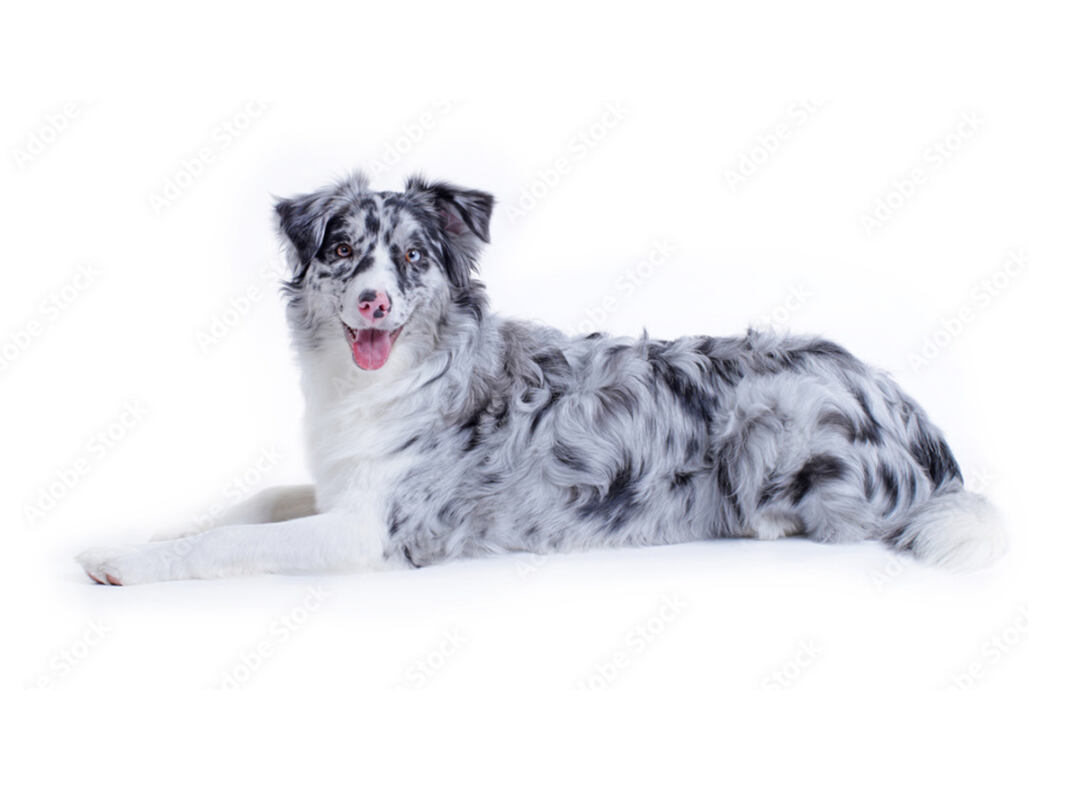
The Blue Merle and White Australian Shepherd is a wonderful merle variant, just like the Blue Merle Tri-Color. As a result, among all blue merle Aussies, they are regarded as having the second most popular coat color variety. The basic hue of these dogs’ coats is the well-known blue merle. These Aussies do not, however, have the tan and copper marks on their coat like the tricolor.
They merely have white marks instead. “Blue merle and white,” then. They can resemble a Siberian Husky a little bit of the tan markings are absent. Because of this, blue merles with white markings are frequently mistaken for huskies, particularly when they are young.
Solid Blue Merle Australian Shepherd

Despite being called “blue merle,” Solid Blue Merle Australian Shepherds may not be as common as you might think. They have mostly grey fur with black polka spots or patches. The patches, which could take many different shapes and sizes, will appear all over the body.
There shouldn’t be any additional coloration on a solid blue merle, not even the typical white, copper, or tan markings. Whatever the case, these dogs are amazing and have a unique appearance that makes a great conversation or icebreaker.
Blue Merle Tri Australian Shepherd
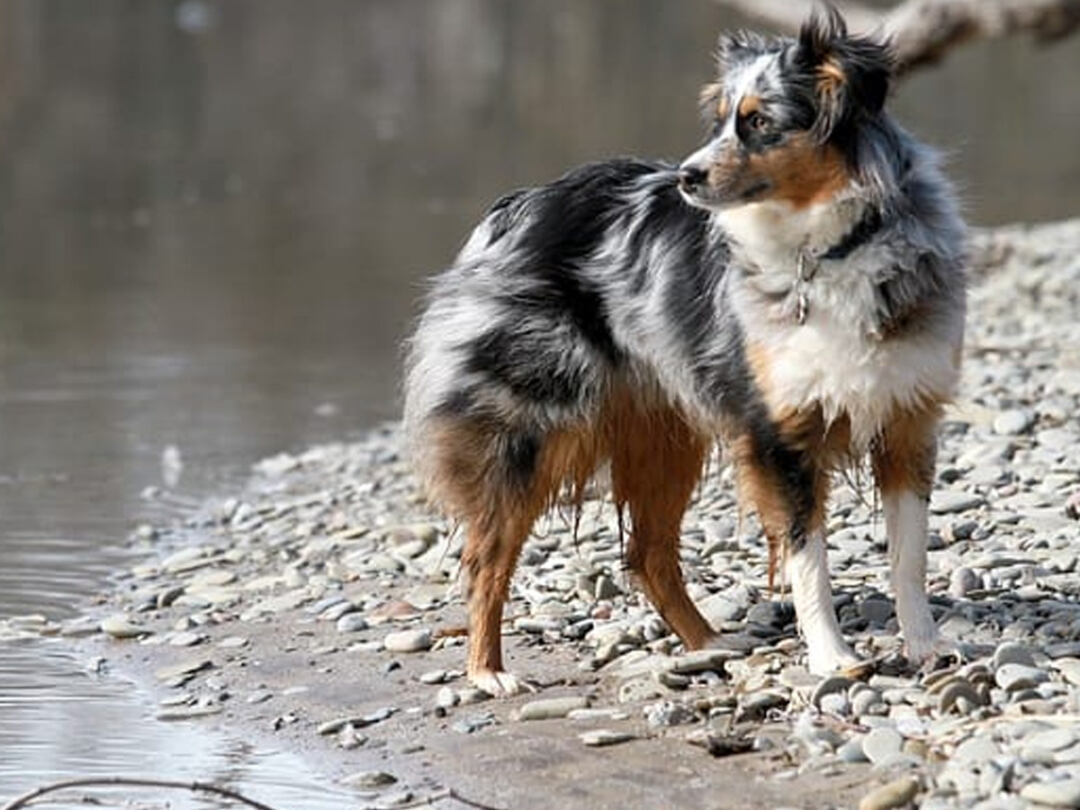
The Blue Merle Tricolored Australian Shepherd is the most common of the four blue merle variations. They have the richest, most striking color contrasts, which, in my opinion, makes them the most beautiful. They may even be the color palette I like best for Australians overall.
Once more, these Australian Shepherds have the blue merle foundation coat, which is composed of black patches on a grey and white coat. Whatever the number and appearance of the patches, there is always a grey back. But that’s not all. The unique features of the blue merle tri include white, copper, or tan highlights on the nose, ears, legs, bottom, and chest.
Blue Merle & Tan Australian Shepherd
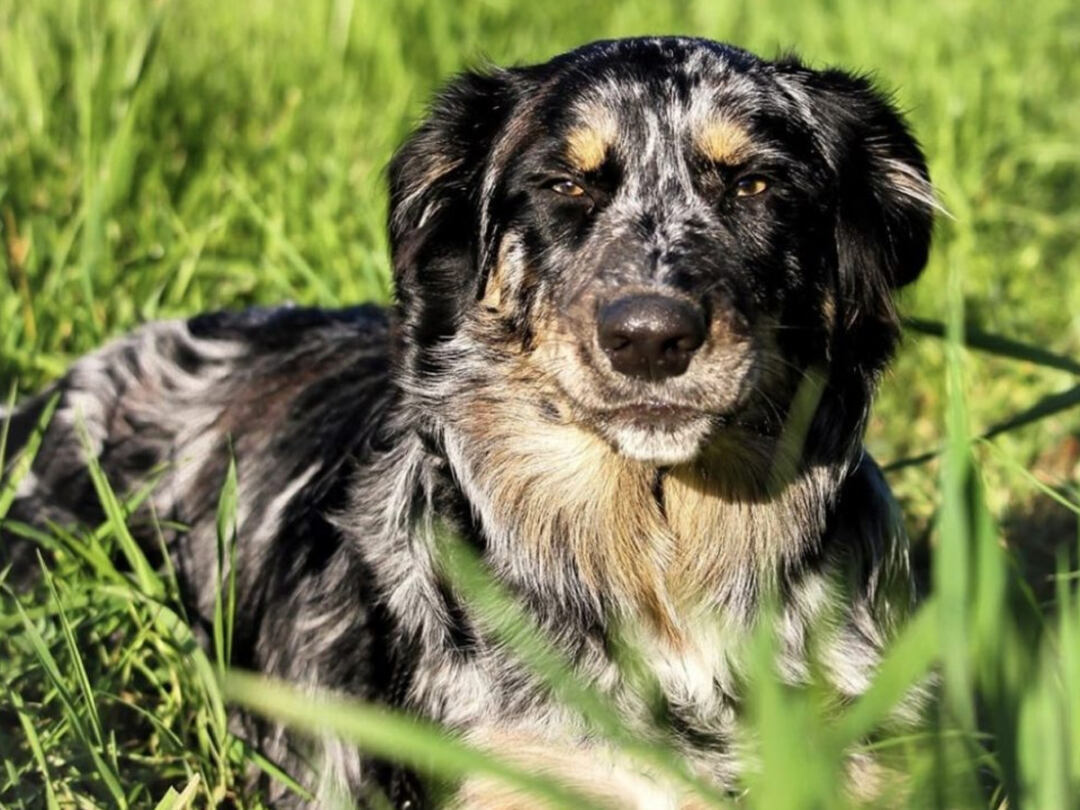
Despite being gorgeous in their own right, the Blue Merle and Tan Australian Shepherd are not particularly common colors. These dogs have the gorgeous blue merle, which only has tan and copper markings and has grey fur with black spots. Untrained eyes may find it challenging to distinguish between “blue merle & tan” and “blue merle tricolor.” The white markings and grey fur of the blue merle don’t typically show out as having different colors.
These dogs are, nonetheless, occasionally seen. Furthermore, it could be difficult to locate a Blue Merle and Tan Australian Shepherd in particular. Be less picky about this color. Simply put, it’s not worthwhile.
The Best Way To Take Care Of A Puppy Blue Merle Australian Shepherd
An Australian Shepherd is not a beginner’s dog, despite being intelligent and handsome. They are great worker dogs and do well in hectic homes. The following information will help you take good care of them:
Grooming
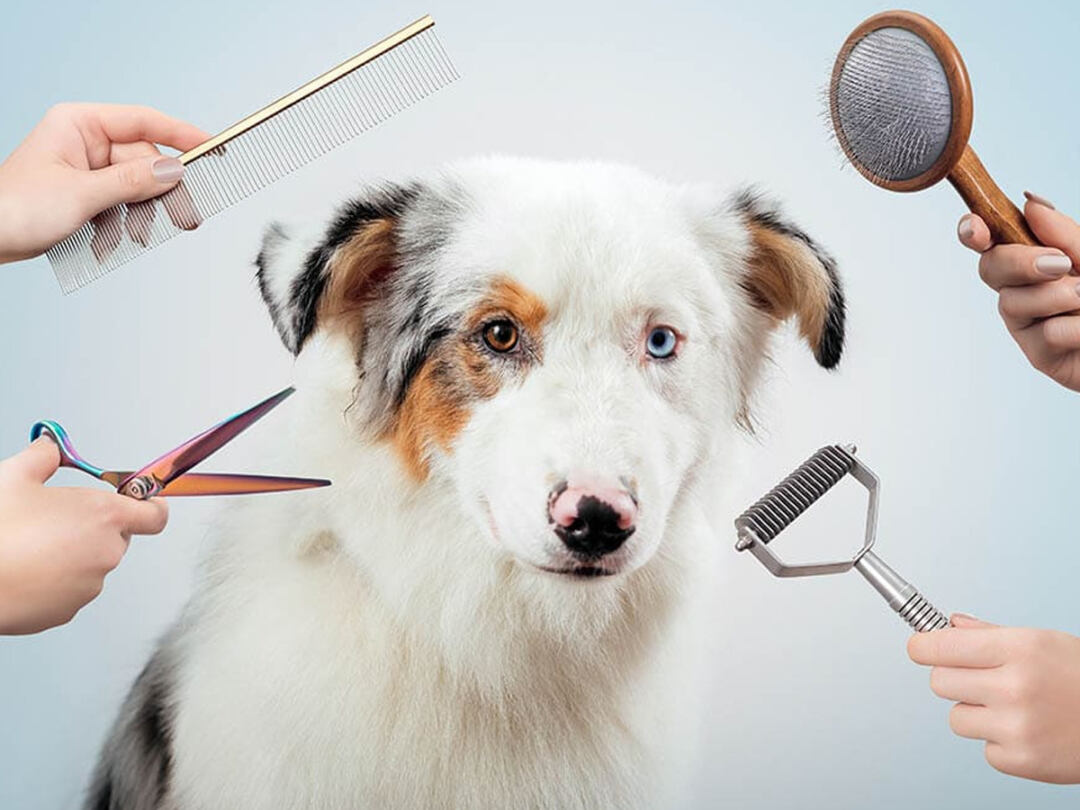
Thankfully, Australian Shepherds don’t shed a lot of hair unless it’s shedding season. Brushing, however, should be done frequently—at least once each week. If your Australian Shepherd is shedding, use a specialist undercoat brush to remove the dead hair to prevent mats or skin problems.
Exercise

Aussie dogs require a lot of exercises. You can be sure that an Australian Shepherd will have the endurance and concentration needed if you plan to get one as a working dog. However, if you’re thinking of having one as a pet, be sure you can commit to giving them lots of toys and games and walking them for at least an hour each day.
Feeding

Australian Shepherds require high-quality dog food because they are such an active, busy breed. It should have high-quality sources of protein and carbohydrates; it could be advisable to choose one made for working dogs. Every dog, however, is unique, and without the proper ratio of food to activity, any dog can put on weight.
However, if you’re concerned that you’re not giving your dog enough food, you can read more about underfeeding here. Ask your veterinarian or a veterinary technician for advice if you’re unsure of the amount you should be feeding your dog.
Health

Scientists have discovered that specific coat color genes are correlated with a dog’s health, even if temperament and coat color have not yet been connected. Particularly, certain lighter coat colors in dogs seem to be directly associated with congenital deafness. White, piebald, roan, and merle are some of the coat colors most frequently associated with canine deafness.
The Australian Shepherd with the blue merle coat is susceptible to congenital deafness. However, if you’re considering getting a blue merle Australian Shepherd as a pet, this is not the only health issue you should take into account. Blue merle Australian Shepherd dogs have an average lifespan of 12 to 16 years and are generally healthy. However, Australian Shepherds as a whole may be genetically prone to a number of health issues.
Are Blue Merle Australian Shepherds Good Family Dogs in Terms of Temperament?
Understanding your blue merle Because of Aussie’s temperament, you will learn how to adapt to their demands and recognize which of their habits require reinforcement, which will help you two become close. They usually get along with families, so as long as you do your part, there shouldn’t be any issues.
A closer look into their temperament as a pet is provided here:
- Hardworking: Aside from being active and energetic, they are also known to be hardworking. They enjoy performing tricks or hard work. If you are on a farm or in a barn with numerous animals that need care, having one is useful.
- Loyal: Dogs are considered to be man’s greatest friend by everyone, and a blue merle Aussie is nothing less. They are so lovely that they will do anything to make their owners happy.
- The instinct to the herd: They still have the impulse to care for or gather humans or other animals because they are descended from herding dogs. If you have a child or small animal at home, you could occasionally notice that they either follow them or fixate on them. The intention of this behavior is to demonstrate control and force them to either perform appropriately or return to their home. Although you must train them to refrain from chasing or biting kids, it is also a method for them to demonstrate protection and loyalty.
- Intelligent: Since they are so smart, training them won’t be a problem. The outcomes—from practicing tricks to potty training—will undoubtedly be favorable. However, because they are intelligent dogs kinds, it is important to keep them mentally active to prevent boredom and destructive behavior.
- Active and Energetic: Whether you own a blue merle Aussie or a blue merle mini Aussie, you will need to have a lot of strength to provide them with tonnes of physical activities because, as mentioned, they are really energetic. They take pleasure in everything you can imagine, including working and exercising. This breed is ideal for a strong, extroverted person who also appreciates and engages in this kind of activity.
Final Thoughts
The Blue Merle Australian Shepherd is one of the most sought-after breeds of the Australian Shepherd due to its ability to combine utility with an attractive appearance that many people find appealing. Many of these dogs have one or two blue eyes, which charm observers and instantly attract their attention. Like all Australian Shepherds, it is very intelligent and easy to train. Their overwhelming need to herd everything, which can be disturbing to children and other animals, is the one disadvantage.
We genuinely hope that you have liked reading it and that it has answered any questions you may have had regarding this breed. If you’ve decided to bring one of these extraordinary animals home.



